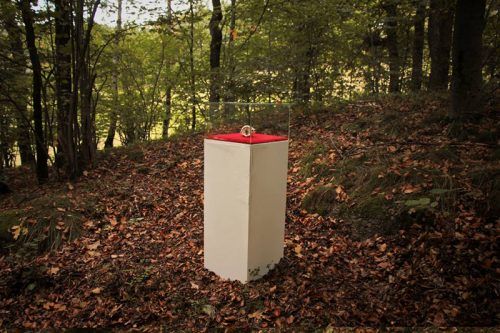Artistic residency “DADA-baba. Following the Child” was the third project organized at Red Manor 8 in Mysłakowice, as a part of rural residency series called “Secrets”. Each one of the projects launched in this country villa aims to explore the surroundings and study everyday life of the village, almost completely depopulated after WW II, yet nowadays one of the biggest in Poland. The characteristics of the place and the building, where activities usually take place, without a doubt determined the course of residencies, which became another interesting aspect of discovering the specifics of Lower Silesia.
For the residency at the “house of creative visits” the organizers invited Aleksandra Bełz-Rajtak – artist-mother, whose creative work is mostly based on her relationship with her small children, who lead her to interesting places and turn her attention to the details of little importance for adults. Frequently omitted, but very relevant problem of balancing the responsibilities of a mother and a working artist became the main force of her project.
Young resident was invited by the curator – Karolina Włodek, who also assisted her creatively and was encouraged to derive form the potential of children's curiosity and fresh outlook and to give them the status of competent equal to the adult in perceiving the outside world.
Additionally, the children – four years old Mikołaj and one year old Kuba became a direct link between the resident and local community, which was an important factor for the realization of the project. The “subliminal” artistic education of the locals that was taking place while discovering the space around the Red Manor was supposed to habituate people often skeptical of contemporary art and make them the explorers of the “Secrets”. It was possible thanks to contacts initiated by the boys at Seniors’ Club, and by organizing workshops of making “widoczki” [“views”] (a hole in the ground usually filled with flowers and artifacts, covered with glass) with local children. The natural flow of activities gained also attention of secondary participants, who took part in the final presentation walk in the garden and the villa. Installations created with the support of the citizens were constructed of everyday items they delivered to the villa – brooms, jars, windows, old electrical outlets and dishes. This way “DADA-baba” fell into the category of site-specific projects carrying out small interventions using existing spaces.

